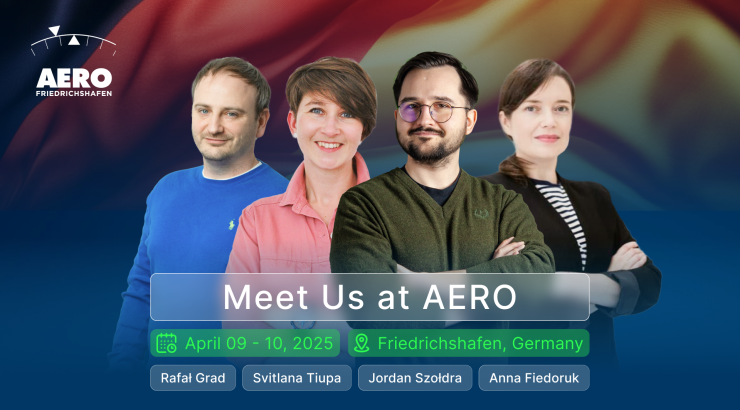Carbon FootPrint in Aviation
Imagine a beloved candy bar that you buy from day to day at your local brick & mortar shop... Do you know how it got there? Maybe it arrived in a truck from a factory in your country or a container by a ship. Or maybe it was imported via a cargo plane.
And what about the ingredients to produce such a candy bar? They also travelled some distance to the factory by some kind of transportation, which produces additional CO2 emissions into the atmosphere. This co-existing mechanism is what we call a carbon footprint of a product.

Carbon footprint awareness trends
It's difficult to think about aviation without CO2 emission. It's still too early to think of a fully electric commercial plane or a jet engine powered by a renewable source of energy like wind or solar energy. But we can calculate the scale of the CO2 emission in the industry. That is why we know that in 2019 the aviation industry emitted 915 million tonnes of CO2 which translates to 2.1% of the whole human induced carbon dioxide and 12% of all transport emissions. If we could compare it to a country's emission, it would rank 17th in the world. It's still not bad when we are talking about a whole transport branch.
These are important figures because of a trend of reducing carbon footprint in daily life and raising awareness about it. In alignment with it, Leon Software introduced several features that automatically generate information about the CO2 emission for your client.
We would like to help our clients in the journey of raising awareness about carbon footprint as they are increasingly eager to join a CSR trend of reducing carbon dioxide emission in their daily work.
How to count it?
There is a possibility to include CO2 emissions on your sales documents. You only need to make a quick adjustment in the OPS module. Choose the settings and the fleet tab, and you can select the fuel type you are using: JETA1 or AVGS. Then, in the performance section, set the average fuel consumption. And then, in the Documents Manager section, you can easily add the info about CO2 emission to the documents.
As the jet fuels differ from each other, it is important to know that the JET-A1 is the fuel for a gas turbine in commercial aviation jets, and AVGS is the main choice for spark-ignited motor engines.
JET-A1 and AVGAS are available after you edit an aircraft in the fleet section.
As the most common aviation fuel types have different additives and use the combustion between each other, you need to keep in mind that they are not the same. It means they emit a different amount of carbon dioxide. That's why Leon implemented a specific calculator for each type of fuel. It provides you with an accurate CO2 emission scale that has taken place during the flight and adds it to your sales documents to keep your client informed about the CO2 emission.
What to find in a report
However, that's not all as it goes for the CO2 emission report. You will find in Leon's reports also much more detailed information. For example, Leon's CO2 emission reports can show a fuel consumption for the entire fleet or a single aircraft.
Such a report for a particular aircraft has two parts. In the first part you would find detailed information about the date, flight number, ACTF data, EU ETS Annex I exceptions, and departure/arrival airports details. Usually, these details provide information about a specific flight.
In the second part of Leon's report, you will find technical data including crucial information about the fuel consumption, fuel details, block time etc. You will find here also detailed information about the passengers on this specific flight, baggage and its weight, and payload informing what was the total weight taken on board during the flight.
In the second part of the report, you will find information about the CO2 emission regarding all the information you have found previously.
What the future holds for CO2 in aviation
By 2050 all aviation companies will need to be CO2 neutral in their work. That's why we see that large commercial aviation companies are investing in an institution that specialises in biotechnology. This is a step to further their R&D development and proceed with biotechnology to reduce the emission of microbes.
So what's the idea? The core idea is to develope a technology that uses tiny organic microbes organisms and tries to adapt the carbon dioxide particles. They try to feed the microbes CO2 and reduce emission eventually.
These investments and experiments are possible thanks to raising awareness and they can impact the development of new technologies that can change the aviation industry.
Not yet a member of Leon community? Contact our Sales team to find out more or jump straight into the 30-day free trial.
TAGGED WITH




